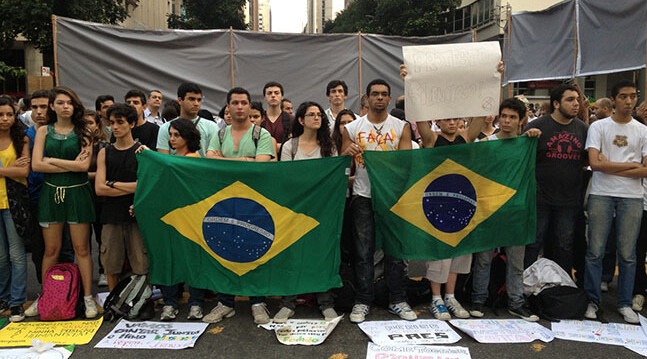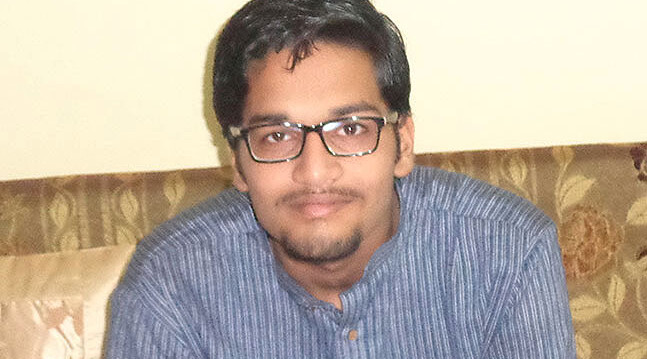Jack Conway, age 16, is a high school student at Associação Escola Graduada de São Paulo, an international school in Brazil. Originally from the United States, he has lived in São Paulo for the past four years. He loves to travel, and he spends his free time trying to feed an insatiable curiosity about the world we all live in.
ESSAY TOPIC: Sustainable Development Goal #11: Make cities and human settlements inclusive, safe, resilient, and sustainable. Propose specific measures for your country (or region or city) to reach the goal's objectives in the next 15 years.
Cities are, in many ways, like living organisms. Each citizen is like a cell, each institution is like an organ, and the transportation system, responsible for connecting the parts of the city and moving goods and people from one place to another, is like the circulatory system. This system is so crucial to an organism that one single blockage can render the entire body incapacitated. In São Paulo, a sprawling metropolis of 20 million and the financial center of Brazil, a few hours spent almost motionless among a sea of cars shows that the same thing happens to the city when a major road is blocked. The transportation infrastructure of São Paulo is deeply flawed, and, like an unhealthy circulatory system, this causes specific problems that make the city less sustainable, safe, and inclusive. If the transportation system is overhauled with a focus on expanding the city's subterranean rail network, it can address these specific problems and make progress toward achieving the UN's 11th Sustainable Development Goal.
With 8.5 million cars on the streets of São Paulo, the dominance of the car as a means of transportation poses a sustainability and safety threat that can be alleviated with a denser subterranean rail network. The dependence on cars for transportation is so great that the longest traffic jam ever recorded—192 miles long—occurred in São Paulo. This can make daily commutes very difficult. My own commute, for example, a 20 minute drive without traffic, has on a few occasions reached an hour and half in length. Considering that the population of the city and metropolitan area continues to grow by the millions, this reliance on cars is simply unsustainable and will lead to increased congestion and road accidents. Furthermore, the tailpipe emissions from the 8.5 million cars in São Paulo constitute an immense threat to the environmental sustainability of the city. They contribute to global warming and threaten important ecosystems. They also spew dangerous chemicals into the air that is breathed by millions, creating a threat to public health and safety. Thus the dependence on cars must be reduced in order to promote sustainability and safety. How? With a denser subterranean rail network.
Seoul's metro has 645 stations; New York's has 469; and Shanghai's has 364. São Paulo's has only 65. In New York, 54.2 percent of commuters use public transportation daily. In São Paulo, that number is only 25 percent. Finally, a survey held by a Brazilian statistical organization found that 49 percent of São Paulo's residents believe that the most important way to increase mobility is to build more train lines. With traffic as frustrating as it is in São Paulo, many residents would certainly be eager to commute via train if they could, but they have no choice but to rely on cars if the metro does not have a stop in their neighborhood. Thus the heavy dependence on cars can be reduced by building more train lines and adding additional stations to current lines, making a denser and more accessible rail network. If the government of São Paulo takes these actions to expand the subway system, it could contribute to a safer and more sustainable future by minimizing the current reliance on cars for transportation.
Not only would an expansion of the subway system increase the safety and sustainability of the city, but it would improve the city's inclusiveness by addressing social inequality. In 2013, massive demonstrations rocked Brazil that began as protests against planned fare increases for public transportation. These protests reflect the disparity between the rich and poor in terms of transportation. For the millions of São Paulo residents who cannot afford a car, public transportation is the only option. Because the subway system is so ineffective, most rely on extremely overcrowded buses and long walks. This makes their commutes expensive, uncomfortable, and time-consuming. The richest of Brazilians, on the other hand, can afford bulletproof cars, personal drivers, and even helicopters. This means that the rich and poor Brazilians are segregated from each other. Brazilian society is already marred by classism and social segregation, and this is reinforced by the segregated transportation system. These problems must be addressed for São Paulo to achieve the 11th Sustainable Development Goal.
An expansion of the subway system would address these problems by improving the commutes of those with lower incomes and appealing to the rich in order to encourage social mixing. It would address the time-consuming, uncomfortable, and costly commutes faced by the poor by reducing the reliance on buses and walking. A denser rail network would cause commuters to switch to trains, which are less time-consuming than long walks and traffic-bound buses. An expansion of the rail network would also allow for more comfortable commutes, as long walks can be quite tiring and the uncomfortably large crowds in buses can be reduced by the increased capacity of a larger rail network. Finally, an expansion of rail system can reduce fares by minimizing the need to transfer between trains and buses at an increased cost. Thus an expansion of the subway system can succeed in improving the commutes of São Paulo's poorest residents. The second way that an expansion of the rail network would promote inclusiveness is that it would reduce the effects of social segregation by encouraging those with higher incomes to use public transportation alongside those with lower incomes. To do this, public transportation must become comfortable and convenient enough to rival cars. This can be achieved by investing in a clean and efficient experience as well as expanding the rail network to pass through high-income neighborhoods, increasing its convenience. These measures would encourage the mixing of social classes, which would minimize the effects of classism and inequality on the current transportation system.
It has become clear that an expansion to São Paulo's rail network would make the city safer, more sustainable, and more inclusive. But because such an expansion would be so expensive, it is unlikely that the government would be willing to embark on such a project. It is, at the moment, building an additional line, but the bureaucracy of the city government has seen its completion date pushed back numerous times, and progress at the construction site is almost invisible. Thus there is one more proposal that could see the proper investment come to light, and it based on the systems in place in Tokyo and Hong Kong. Both Tokyo and Hong Kong have privately owned subway systems, and their need to turn a profit makes them some of the most efficient systems in the world. In a city like São Paulo, whose government is inefficient and poorly funded compared to the governments of Tokyo and Hong Kong, privatization of the subway system would allow a comprehensive expansion of the rail system to avoid becoming stuck in a hole of government bureaucracy. It would provide the incentive to expand the system and make it efficient enough to turn a profit. It could hold the solution to building the subway system that São Paulo needs to achieve the 11th goal.
An expansion of the São Paulo's subway system has the potential to alleviate some of the greatest obstacles to achieving the 11th Sustainable Development Goal. If the city privatizes the subway network and adds more lines and stations, it will become more sustainable, more inclusive, and safer by working to reduce institutionalized classism and the dependence on cars. While the city must do more than reform its transportation system to meet the 11th goal, it cannot meet the goal without reforming its broken system. Like in the human body, the city's well-being will always be at risk if its circulatory system is unhealthy, and, consequently, so will its efforts to achieve the 11th goal. Thus São Paulo would be wise not to spend the next 15 years adding temporary repairs to an ailing system, but building a healthy network of veins and arteries that will allow the city to thrive for decades to come.


